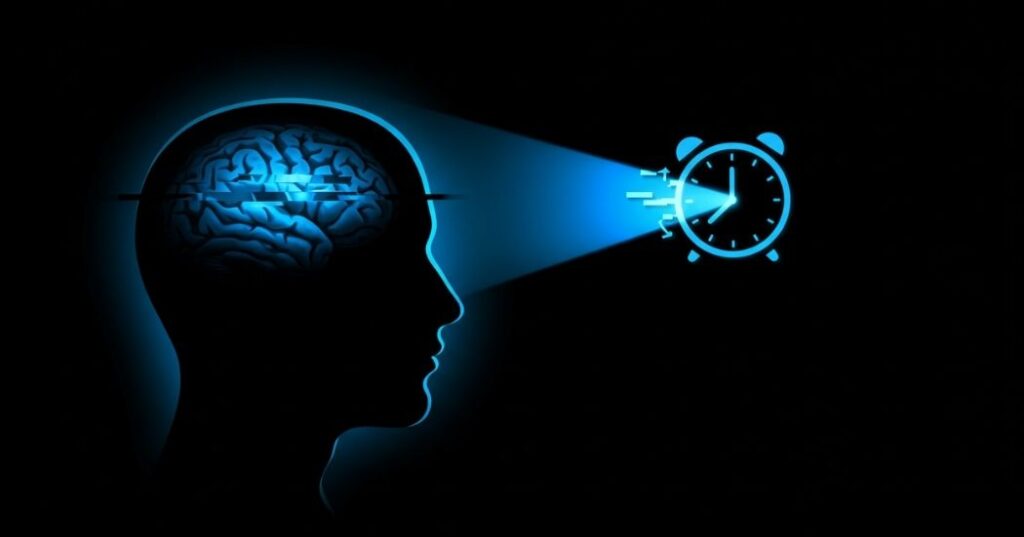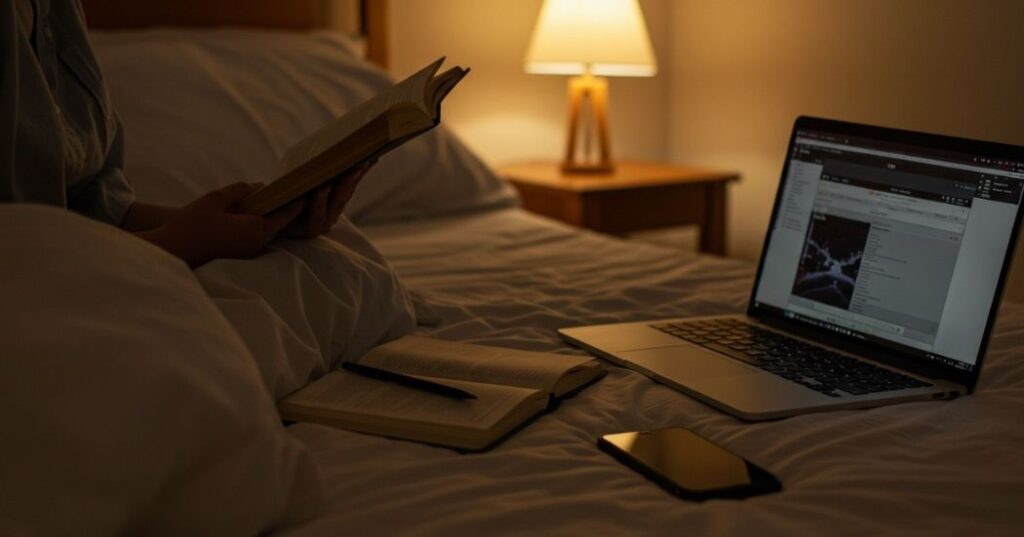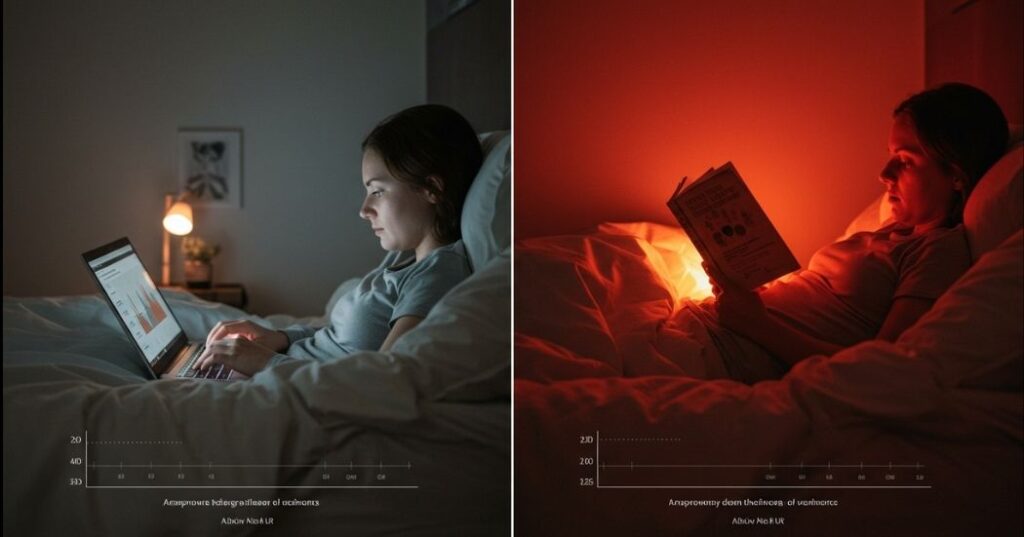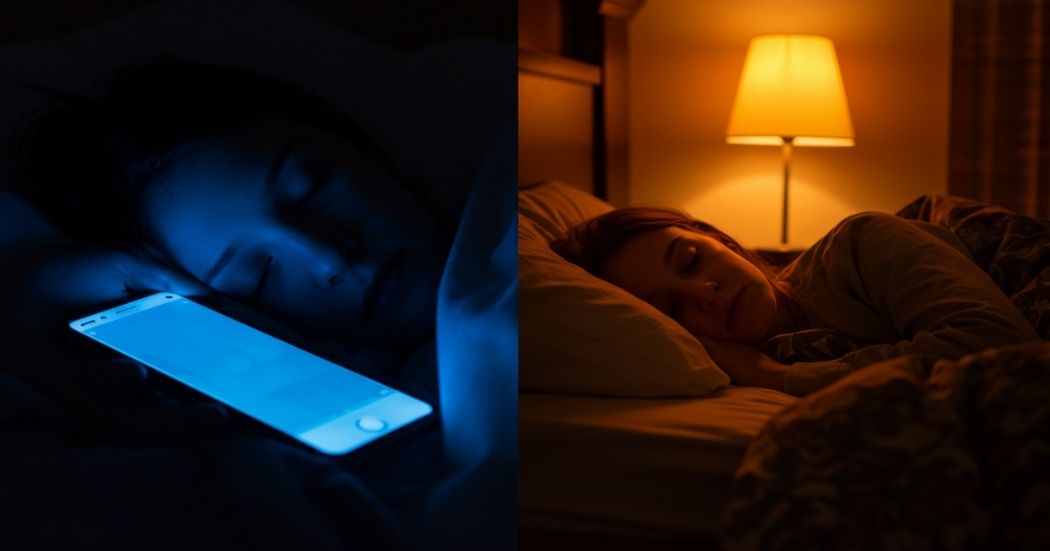Blue Light Blues: Understanding Its Impact on Sleep Recovery and How to Mitigate It
Scrolling late into the night? You’re definitely not alone. It’s a common modern habit. But if you’re consistently battling poor sleep quality, waking up with morning grogginess, or feeling that frustrating paradox of being “wired and tired” as bedtime approaches—your digital screen might be the primary culprit.
Blue light is ubiquitous in our modern world, emitted from our phones, laptops, tablets, TVs, and even many LED and fluorescent light bulbs. While this high-energy light is incredibly beneficial for boosting our mood, alertness, and cognitive function during the day, its presence in the evening can seriously interfere with your body’s natural sleep recovery processes.
Let’s break down exactly how blue light impacts your precious sleep and, more importantly, discover actionable strategies to effectively mitigate its negative effects.
What Is Blue Light? A Quick Primer
Blue light is a segment of the visible light spectrum characterized by its high energy and short wavelength. It’s naturally emitted by powerful sources like the sun, making it crucial for regulating our body’s natural clock.
However, artificial sources now inundate our environment:
- Digital Screens: Smartphones, tablets, computers, and TVs are major emitters.
- LED Lighting: Energy-efficient LED bulbs, increasingly common in homes and offices, emit a significant amount of blue light.
- Fluorescent Lights: Often found in offices and public spaces, these also contribute to blue light exposure.
During the day, blue light is undeniably beneficial. It helps to regulate our circadian rhythm, boosts mood, enhances alertness, and improves cognitive performance. But when evening falls, this same beneficial light transforms into a potent sleep disruptor.
How Blue Light Sabotages Your Sleep Recovery

The adverse effects of blue light exposure in the evening are well-documented and profoundly impact your body’s ability to transition into and maintain restorative sleep.
1. Melatonin Suppression: The Sleep Hormone Hijack
Melatonin is widely known as your body’s primary sleep hormone. It’s naturally produced by the pineal gland in response to darkness, signaling to your brain that it’s time to prepare for sleep. Evening exposure to blue light effectively tells your brain: “It’s still daytime!”—thereby significantly delaying or suppressing this crucial melatonin release.
A landmark Harvard study found compelling evidence that exposure to blue light before bed suppresses melatonin production twice as much as exposure to other light wavelengths, and it also shifts the body’s natural sleep-wake cycle more significantly. This direct interference makes falling asleep much harder.
Read the study summary here: Harvard Health: Blue light has a dark side
2. Circadian Rhythm Disruption: Your Internal Clock Gets Confused
Your body’s master internal clock, the circadian rhythm, is exquisitely sensitive to light cues. When exposed to bright, blue-rich light from screens or artificial lighting in the evening, your brain receives conflicting signals. This misalignment between your internal clock and the external environment leads to circadian misalignment, manifesting as:
- Difficulty Falling Asleep: Your brain remains alert, resisting the natural urge to sleep.
- Lighter, Less Restorative Sleep: Even if you do fall asleep, the quality is often compromised, with less time spent in crucial restorative stages.
- Increased Sleep Fragmentation: You might experience more frequent awakenings throughout the night, even if brief, disrupting sleep continuity.
3. Reduced REM and Deep Sleep: Compromised Physical & Mental Repair
Beyond merely affecting sleep onset, blue light exposure also impacts the architecture of your sleep, specifically reducing the time you spend in the most vital stages: REM (Rapid Eye Movement) sleep and slow-wave (deep) sleep. These stages are critical for:
- Memory Consolidation: Crucial for learning and forming long-term memories.
- Muscle Repair and Physical Regeneration: Where most of your body’s physical healing and growth hormone release occurs.
- Hormonal Regulation and Immune Function: Essential for overall health and vitality.
In the long term, insufficient time in these restorative sleep stages means you’ll consistently feel less restored, even if you spend 8 hours in bed. This can contribute to chronic fatigue, impaired cognitive function, and diminished physical recovery.
How to Effectively Mitigate Blue Light’s Impact (Step-by-Step Action Plan)
The good news is that you don’t have to live in a dark cave or give up technology entirely. Strategic adjustments can significantly reduce blue light’s negative effects.
Step 1: Implement a Digital Sunset: Power Down Before Bed

This is perhaps the single most impactful step you can take. Create a clear boundary between your digital life and your sleep preparation.
- Strict Cutoff: Power down all bright, blue-light-emitting screens (phones, tablets, laptops, TVs) at least 60–90 minutes before your target bedtime. Consistency here is key.
- Replace with Calming Activities: Use this “digital sunset” time for activities that naturally promote relaxation:
- Reading a physical book (under dim, warm light)
- Gentle stretching or restorative yoga
- Journaling to offload thoughts and worries
- Listening to NSDR (Non-Sleep Deep Rest) protocols or calming sleep stories/meditations.
Step 2: Leverage Blue Light Blocking Tools: Your Digital Shield
For times when completely avoiding screens isn’t possible (e.g., late-night work, emergency), these tools can significantly reduce harmful blue light exposure.
- Blue Light Blocking Glasses: Invest in high-quality, amber- or red-tinted glasses. These are highly effective at filtering out the specific blue wavelengths that disrupt melatonin. Wear them if you must use screens after your digital sunset.
- Software Filters: Activate Night Mode or blue light filters on all your devices. Programs like f.lux (for desktop computers) and Night Shift (for iOS devices) automatically adjust screen color temperature to warmer tones after sunset.
- Red Spectrum Lighting in the Bedroom: Replace traditional LED bulbs in your bedroom with specialized red or amber-toned bulbs. These emit light wavelengths that do not interfere with melatonin production.
Product Recommendation: Brands like Swanwick Sleep Glasses are well-regarded for their effective blue light blocking technology.
Step 3: Limit Overhead LEDs and Opt for Warmer Tones at Night
It’s not just screens. The type of lighting in your home matters significantly in the evening. Many modern LED and fluorescent bulbs emit substantial blue light.
- Switch to Warm White Bulbs: In your evening spaces (especially bedrooms and living areas), replace cool-white bulbs with warm white bulbs (look for a color temperature of <2700 Kelvin). These emit less blue light and create a more inviting, relaxing atmosphere.
- Utilize Ambient Lighting: Rely on dimmer switches, table lamps, or floor lamps instead of bright overhead lights.
- Natural Light Sources: Consider using Himalayan salt lamps or specialized red or amber night lights for very low, sleep-friendly illumination. The tone of light affects your circadian cues even more profoundly than sheer brightness.
Step 4: Support Sleep Biochemically: Key Nutrients for Recovery
While primarily a behavioral strategy, certain nutrients can biochemically support your body’s natural sleep processes, especially when dealing with residual blue light impact or general sleep recovery needs.
- Magnesium Glycinate: This highly absorbable form of magnesium helps to calm the nervous system, relax muscles, and support the activity of GABA, an inhibitory neurotransmitter crucial for relaxation.
- Glycine: This amino acid promotes deeper, more consolidated sleep by helping to lower your core body temperature and acting as a calming neurotransmitter.
- Melatonin (Low Dose and Strategically): If your circadian rhythm is severely disrupted (e.g., due to shift work or significant jet lag, or as a short-term intervention post-illness), a very low dose of melatonin (0.3mg) taken 30-60 minutes before your desired sleep time can help gently signal “nighttime” to your brain without creating dependency or grogginess common with higher doses. This is for rhythm support, not as a general sleep aid.
Step 5: Anchor Your Morning Light: Resetting Your Circadian Rhythm
Just as avoiding blue light at night is crucial, embracing bright light in the morning is equally vital for reinforcing a strong, healthy circadian rhythm.
- Morning Light Exposure: Within 10-20 minutes of waking, expose yourself to natural light for 10-20 minutes. Step outside if possible, even on a cloudy day, as outdoor light is exponentially more powerful than indoor light. If going outside isn’t an option, sit by a bright window or use a full-spectrum light therapy lamp (at least 10,000 lux) directed at your eyes from an arm’s length away.
- Consistency: This morning light exposure helps to powerfully reset your internal clock, promoting alertness during the day and making you naturally feel sleepy at the appropriate time at night.
Real-Life Reset: Theo’s Tech-Free Wind-Down Transformation

Theo, a 29-year-old freelance graphic designer, found himself caught in the common trap of late-night digital habits. He would often watch YouTube videos or scroll through social media in bed until well past 1 AM, convinced it helped him “unwind.” The result was consistent difficulty falling asleep, shallow rest, and chronic morning grogginess that impacted his creative work.
Motivated to reclaim his sleep, Theo implemented a strict digital sunset. Instead of screen time in bed, he replaced his evening YouTube sessions with reading fiction under a red-spectrum reading light (which doesn’t interfere with melatonin). He also started sipping on a warm herbal tea. Within just two weeks, the results were remarkable: his sleep quality app (which he checked only in the morning) showed a 25% increase in his deep sleep duration, and he consistently woke up feeling more refreshed, clear-headed, and energized. Theo’s experience underscores that powerful change can come from seemingly small, consistent shifts.
Final Thoughts: Timing Your Tech for Optimal Sleep
You don’t necessarily have to eliminate technology from your life entirely. The key lies in timing your tech use wisely.
Blue light itself isn’t inherently “bad.” In fact, it’s essential for daytime alertness and mood. However, when it makes an unwelcome appearance at the wrong time—specifically in the hours leading up to your bedtime—it profoundly confuses your brain, delays your natural sleep signals, and ultimately impedes your body’s crucial overnight recovery processes.
Blue light isn’t the enemy—timing is.
Build your sleep defense by mastering your tech use, not removing it.
By integrating these evidence-based habits and utilizing smart tools, you can effectively mitigate blue light’s impact, reclaim control over your circadian rhythm, and restore your ability to rest deeply—even in our increasingly digital world. Prioritize your “digital sunset” and embrace the power of darkness for truly restorative sleep.
Are you struggling with sleep after prolonged screen time? Don’t let blue light steal your rest any longer. Download our comprehensive Blue Light Sleep Reset Guide for step-by-step solutions and actionable tips designed for deeper, digital-age recovery. Take the first step towards better sleep tonight!
You’re not alone—many struggle to reclaim their sleep in a screen-heavy world.
These posts will help you manage blue light, build smarter habits, and truly rest:
- → How My Digital Detox Routine Saved My Sleep and Focus
- → Build a Screen-Free Wind Down Routine in 5 Easy Steps
- → Reduce Blue Light Exposure: How I Reclaimed Sleep Naturally
✨ It’s time to design your “digital sunset” and take back your sleep cycle—one habit at a time.
📚 References
- Chang, A. M., et al. (2015). Evening use of light-emitting eReaders negatively affects sleep, circadian timing, and next-morning alertness. PNAS, 112(4), 1232–1237.
https://doi.org/10.1073/pnas.1418490112 - Harvard Health Publishing. (2012). Blue light has a dark side.
https://www.health.harvard.edu/staying-healthy/blue-light-has-a-dark-side - West, K. E., et al. (2011). Blue light from light-emitting diodes elicits a dose-dependent suppression of melatonin in humans. Journal of Applied Physiology, 110(3), 619–626.
https://doi.org/10.1152/japplphysiol.01413.2010 - Brainard, G. C., et al. (2001). Action spectrum for melatonin regulation in humans: evidence for a novel circadian photoreceptor. Journal of Neuroscience, 21(16), 6405–6412.
https://doi.org/10.1523/JNEUROSCI.21-16-06405.2001

